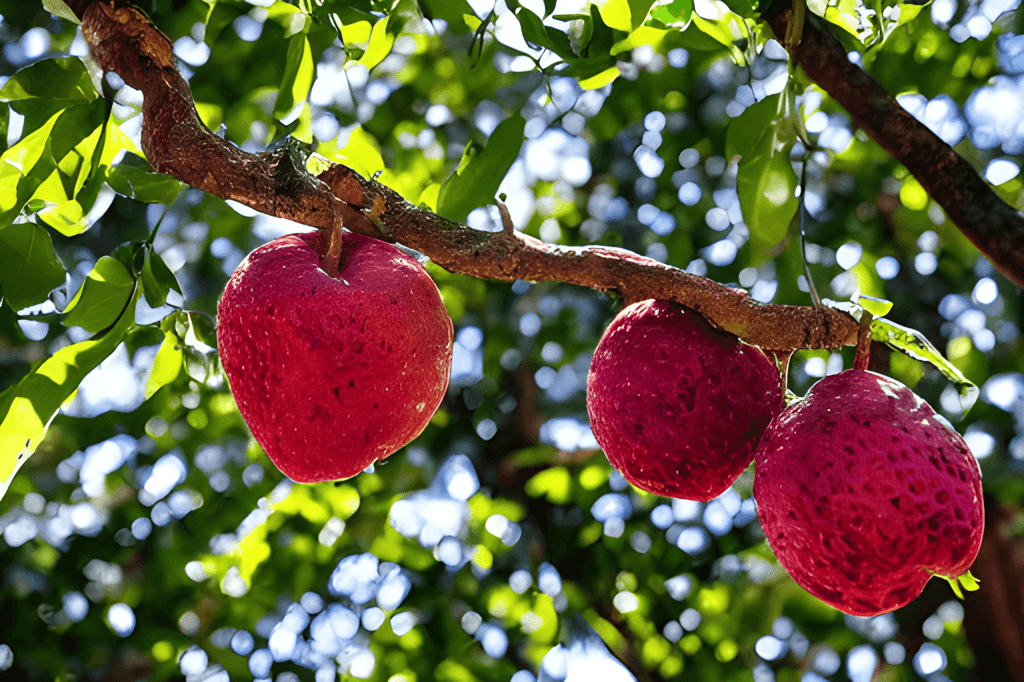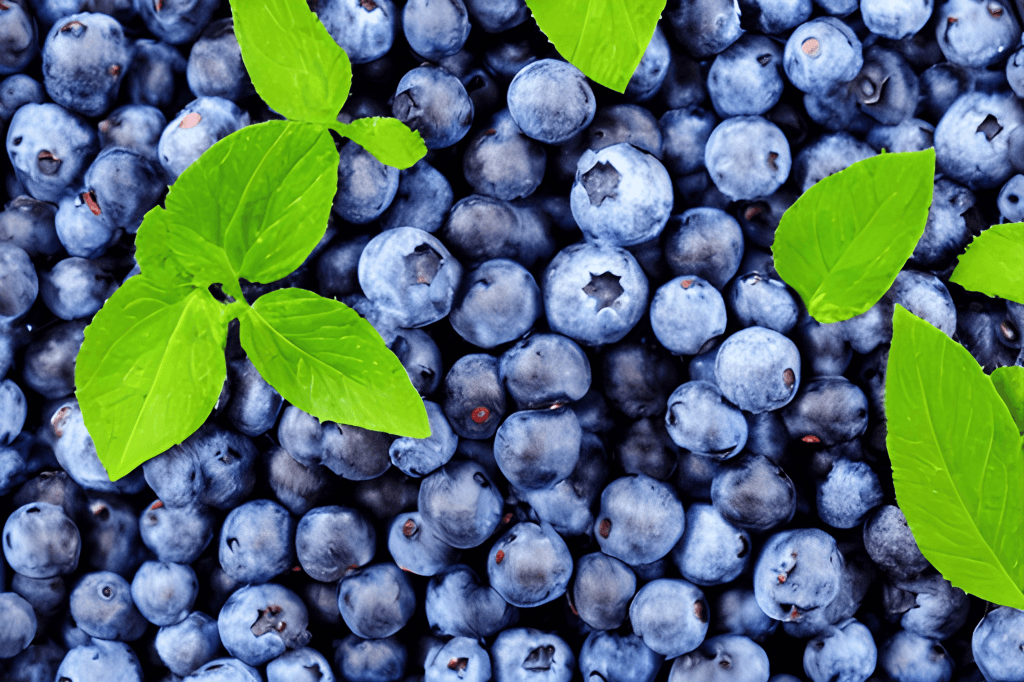Exploring the Lost Flavors of Nature

In the annals of botanical history, there exists a treasure trove of fruits that once graced the Earth with their unique flavors, textures, and cultural significance. However, as human civilization advanced and environmental pressures intensified, many of these rare fruits found themselves on the brink of extinction or lost forever. From the verdant forests of tropical islands to the rugged mountains of remote continents, these fruits adorned the landscapes and sustained ecosystems in ways both profound and delicate. Yet, despite their resilience and adaptability, they succumbed to the relentless march of progress, leaving behind only whispers of their existence.
In this comprehensive exploration, we delve into the stories of 20 rare fruits that faced extinction or came dangerously close to it. From the mysterious Franklinia tree of the southeastern United States to the enigmatic Judean date palm of the Middle East, each fruit carries with it a tale of botanical marvel and human folly. We unravel the mysteries of fruits like the Tahiti apple, once abundant in the forests of French Polynesia, and the elusive Hawaiian chaff flower, clinging to survival in the face of habitat destruction. Through these narratives, we uncover the intricate interplay between nature and humanity, where the fate of a single fruit can echo the broader challenges of conservation and biodiversity loss.
As we journey through time and space, we encounter fruits like the Saint Helena ebony, lost to the winds of change in the remote corners of the South Atlantic, and the wild banana species of East Africa, threatened by the encroachment of modern agriculture. We marvel at the resilience of the Pando aspen grove, a sprawling clonal colony in Utah, USA, and lament the decline of the black apple tree in the cloud forests of South America. Amidst the loss and lamentation, we find glimmers of hope in the efforts of conservationists and botanists striving to preserve these precious fruits for future generations.
Through meticulous research and poignant storytelling, we illuminate the forgotten chapters of botanical history, where rare fruits once flourished and now linger on the edge of oblivion. Join us on a journey of discovery and remembrance, as we pay homage to the 20 rare fruits that became extinct or close to being, and contemplate the fragile beauty of nature’s bounty.
One such fruit is the Franklinia tree’s fruit (Franklinia alatamaha). This species, native to the southeastern United States, was discovered in the mid-18th century by John and William Bartram along the Altamaha River in Georgia. Despite efforts to cultivate it, the Franklinia tree disappeared from the wild by the early 19th century. It’s believed to have gone extinct due to habitat destruction and possibly disease. The exact appearance and taste of its fruit remain a mystery, as it hasn’t been seen in its natural habitat for over two centuries.
Another example is the Judean date palm (Phoenix dactylifera) which went extinct around 500 AD. This ancient fruit tree was once abundant in the Middle East, particularly in the region around the Dead Sea. Its extinction was likely caused by a combination of factors, including deforestation, climate change, and possibly the spread of disease. However, in recent years, there have been successful attempts to germinate seeds discovered at archaeological sites, giving hope for the resurrection of this once-iconic fruit.
The Silphium plant (Silphium perfoliatum) was another fruit-bearing plant that disappeared from the wild. Native to the Mediterranean region, particularly in ancient Greece and Rome, Silphium was prized for its medicinal and culinary properties. It was so highly valued that it became a symbol of wealth and was even depicted on ancient coins. However, due to overharvesting and habitat destruction, the plant went extinct around the 1st century AD. Its fruit, which resembled a large fennel or celery, was used in various dishes and as a flavoring agent.
Duguetia lanceolata, also known as the graine marron or wild nutmeg, was a fruit tree native to Mauritius. It was prized for its aromatic and flavorful fruits, which were used in local cuisine and traditional medicine. However, deforestation and habitat destruction led to the decline of the wild nutmeg tree, and it was declared extinct in the wild in the early 20th century. Efforts are ongoing to preserve this species through cultivation and conservation programs, but its original wild form is now lost forever.
Hawaiian chaff flower (Achyranthes atollensis), is a fruit-bearing plant native to the Hawaiian Islands. Once abundant in the wild, its population has drastically declined due to habitat destruction, invasive species, and human activities. Conservation efforts are underway to protect the remaining populations and restore its habitat to prevent its extinction.
Bonin flying fox (Pteropus pselaphon), also known as the Bonin fruit bat, plays a crucial role in dispersing seeds of various fruits, including those of the Bonin almond (Prunus boninensis). Native to the Ogasawara Islands in Japan, the Bonin flying fox has faced habitat loss, hunting, and predation by invasive species, leading to a decline in its population. The Bonin almond, which relies on the bat for pollination and seed dispersal, is at risk of extinction due to the bat’s decline.
Saint Helena olive (Nesiota elliptica), was a fruit-bearing tree endemic to the island of Saint Helena in the South Atlantic Ocean. It was once abundant on the island but was driven to extinction in the wild by the 19th century due to habitat destruction, introduced pests, and overgrazing by livestock. Efforts to reintroduce the Saint Helena olive to its native habitat have been made, but it remains critically endangered.
The paradise nut tree (Lecythis zabucajo), was a large fruit-bearing tree native to the Amazon rainforest. Its fruit, known as the paradise nut or sapucaia nut, was valued for its edible seeds. However, extensive deforestation and habitat destruction in the Amazon basin have led to the decline of the paradise nut tree’s population, making it increasingly rare in the wild. Conservation efforts are necessary to protect the remaining populations and preserve this species from extinction.
Tahiti apple (Syzigium amamianum) was once found in the forests of Tahiti and other islands in French Polynesia. This fruit, resembling a small apple, was highly valued by the native people for its sweet and tangy flavor. However, deforestation and habitat loss have led to the decline of the Tahiti apple tree, and it is now considered critically endangered. Conservation efforts are underway to preserve this unique fruit and its habitat.
White dittany (Cneorum tricoccon) is a small shrub native to the Mediterranean region, known for its aromatic leaves and small white fruits. It was historically used in traditional medicine and as a culinary herb. However, due to overharvesting and habitat destruction, the white dittany has become increasingly rare in the wild. Efforts to cultivate and conserve this plant are essential to prevent its extinction.
Nepal trumpet flower (Oroxylum indicum) is a fruit-bearing tree native to South and Southeast Asia. Its large, trumpet-shaped flowers and elongated seed pods make it a distinctive species in the region. The fruit, although not commonly consumed, has traditional medicinal uses in some cultures. However, habitat loss and overexploitation of its timber have led to a decline in the population of the Nepal trumpet flower. Conservation efforts are needed to protect this species and its habitat from further degradation.
Florida torreya (Torreya taxifolia) is a rare coniferous tree native to the southeastern United States, particularly Florida and Georgia. Its large, olive-like fruits were once an important food source for wildlife in the region. However, the Florida torreya has faced numerous threats, including habitat loss, invasive species, and a fungal disease known as “torreya blight.” As a result, the species is now critically endangered, with only a few individuals remaining in the wild. Conservation efforts are underway to save this iconic tree from extinction.
Franklin Tree (Franklinia alatamaha) was a small flowering tree native to the southeastern United States. Discovered by botanists John and William Bartram in Georgia in the 18th century, it bore fragrant white flowers and produced small, round fruits. Despite cultivation efforts, the Franklin Tree disappeared from the wild by the 19th century, likely due to habitat loss and other environmental pressures. Today, it survives only in cultivation, making it a rare and cherished species among plant enthusiasts.
The Encephalartos woodii, also known as the Wood’s cycad, is a remarkable fruit-bearing plant that has faced near extinction. Native to South Africa, it produces large, cone-like structures containing seeds. Discovered in the late 19th century, the Wood’s cycad was thought to be extinct in the wild until a single male specimen was found in 1895. Efforts to propagate the species have been challenging due to its complex reproductive biology, but conservationists continue to work to preserve this unique cycad.
The Silphium plant, native to the Mediterranean region, was renowned in antiquity for its medicinal and culinary properties. The plant’s resin, known as “silphium juice,” was highly prized in ancient Rome and Greece. Despite its importance, the Silphium plant went extinct in the 1st century AD, likely due to overharvesting and habitat loss. Today, it is remembered as a symbol of lost biodiversity and the consequences of unsustainable exploitation.
The Bonin Islands coconut (Cocos nucifera var. boninensis) is a rare coconut variety native to the Bonin Islands in Japan. It produces small, round coconuts with a unique flavor profile. Due to its limited distribution and the threat of habitat destruction, the Bonin Islands coconut is considered endangered. Conservation efforts, including the establishment of protected areas and propagation programs, are underway to safeguard this valuable genetic resource for future generations.
The Saint Helena ebony (Trochetiopsis ebenus) was a fruit-bearing tree endemic to the island of Saint Helena in the South Atlantic Ocean. Along with its striking ebony wood, the tree produced small, round fruits that were once a staple food for the island’s inhabitants. However, habitat destruction and invasive species led to the decline of the Saint Helena ebony, and it was declared extinct in the wild in the 19th century. Efforts to reintroduce the tree to its native habitat have been made, but it remains critically endangered.
The wild banana species Ensete glaucum, also known as the Ethiopian banana or false banana, is native to Ethiopia and other parts of East Africa. Unlike the familiar sweet bananas commonly eaten today, the fruits of Ensete glaucum are starchy and not typically consumed raw. However, they are an important food source in certain regions, where they are used to make traditional dishes such as kocho. Despite its cultural significance, habitat loss and overexploitation have led to a decline in the wild population of Ensete glaucum.
The Pando aspen grove (Populus tremuloides) in Utah, USA, is not known for its fruits but rather for its unique reproductive strategy. Pando is a clonal colony of quaking aspen trees, meaning that all the trees in the grove are genetically identical and connected by a single root system. While Pando continues to produce new shoots from its root system, the grove has been threatened by factors such as drought, fire suppression, and grazing. Conservation efforts are underway to protect this remarkable organism and its habitat.
The black apple (Eugenia victoriana) is a rare fruit native to the cloud forests of Ecuador and Colombia. Its dark purple-black skin encases sweet and tangy flesh, making it a prized delicacy among locals. However, deforestation and habitat fragmentation have put the black apple tree at risk of extinction. Conservation organizations are working to protect the remaining populations of this unique fruit tree and its montane forest habitat.
The exploration of these 20 rare fruits that faced extinction or came dangerously close to it unveils a poignant narrative of loss, resilience, and the intricate balance between human activity and natural ecosystems. As we reflect on the stories of the Franklinia tree, the Judean date palm, and the Tahiti apple, among others, we are reminded of the profound impact that human intervention and environmental changes can have on the delicate tapestry of biodiversity. Through the lens of botanical history, we witness the consequences of habitat destruction, overharvesting, invasive species, and climate change on these once-thriving fruits. The plight of the Saint Helena ebony, the Bonin Islands coconut, and the black apple serves as stark reminders of the urgent need for conservation efforts to safeguard endangered species and their habitats.
However, amidst the challenges and uncertainties, there are rays of hope shining through. The resilience of the Pando aspen grove and the dedication of conservationists working to preserve rare fruits offer glimmers of optimism for the future of biodiversity conservation. By raising awareness, supporting conservation initiatives, and advocating for sustainable practices, we can play a vital role in protecting these invaluable treasures of nature for generations to come. The tales of these 20 rare fruits serve as a poignant reminder of the fragility of life on Earth and the interconnectedness of all living beings. As we bid farewell to the lost flavors of nature, let us also embrace the opportunity to nurture and protect the remaining biodiversity that sustains our planet. Together, we can cultivate a future where rare fruits thrive once more, enriching our lives and preserving the diversity of life for generations to come.
Join our newsletter







Leave a comment